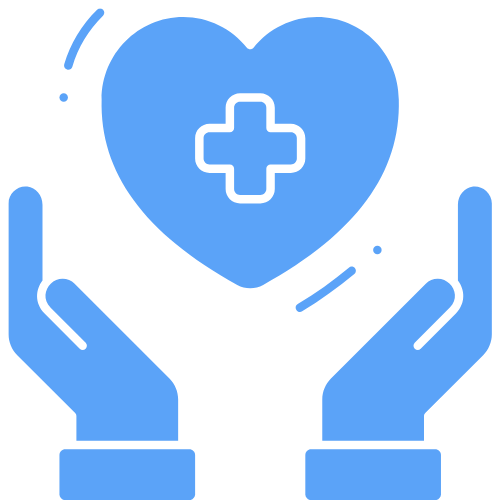Individual therapy focuses on your personal growth and mental health through one-on-one sessions with a therapist, using approaches like CBT to address specific challenges you face. In contrast, family therapy examines relationship patterns and communication between family members, working to improve dynamics as a group. While individual therapy provides confidential space for self-exploration, family therapy helps resolve systemic issues affecting the entire household. Understanding these key differences will help you determine which approach best suits your situation.
Core Therapeutic Approaches and Goals

Individual and family therapy break down into distinctly different approaches and goals, despite both serving as essential mental health interventions. When you’re considering evidence-based approaches, individual therapy focuses on your personal dynamics through one-on-one sessions, addressing internal struggles and psychological patterns. Meanwhile, family therapy examines the broader system of relationships and communication patterns within your household unit. Talk therapy sessions help patients express their concerns openly with trained experts. The therapeutic change process fundamentally differs as family interventions target relationship patterns rather than individual issues. The goals also diverge considerably, with individual therapy targeting your personal recovery and self-awareness through cognitive-behavioral strategies and trauma processing. Without a combination of both types of therapy, patients face higher relapse risks. Family therapy, however, aims to strengthen collective resilience by improving communication and resolving systemic issues. Cultural considerations play a pivotal role in both approaches, as they influence how you’ll respond to different therapeutic frameworks, whether it’s individual psychodynamic work or family systems interventions.
The Power of One-on-One Sessions
One-on-one therapy sessions offer unparalleled advantages in mental health treatment, creating a secure environment where you can investigate personal challenges without external interference. The confidentiality safeguard guarantees your sensitive information remains protected, while rapport development strengthens through consistent, focused interactions with your therapist. Effective approaches like CBT and DBT can help develop stronger coping mechanisms and promote lasting recovery. Just as websites employ security measures to protect sensitive data, therapy sessions maintain strict privacy protocols to safeguard your personal information.
You’ll benefit from personalized treatment plans that adapt to your specific needs and progress rate. Research has consistently shown that individual psychotherapy achieves standardized mean differences of 0.70 when compared to waitlist controls. The therapeutic alliance you build enables deeper exploration of complex emotions, trauma, and behavioral patterns without the constraints of group dynamics. Your therapist can quickly adjust strategies based on your responses and provide immediate support during critical moments. This individualized attention allows for thorough analysis of underlying issues while maintaining flexibility in scheduling to accommodate your personal circumstances and urgent mental health needs.
Group Dynamics in Family Counseling

When you’re working with multiple family members in therapy, you’ll observe complex patterns of communication that reveal both spoken and unspoken relationship dynamics. You’ll notice how power structures within the family influence interactions, from subtle non-verbal cues to overt behavioral patterns that shape decision-making and emotional expression. Managing these multi-person sessions requires careful attention to ensuring each family member’s voice is heard while maintaining therapeutic boundaries and promoting constructive dialogue. Therapists must remain mindful of cultural backgrounds when interpreting family interactions and communication styles. These family dynamics provide unique opportunities to cultivate virtues and well-being among members through their interactions. The focus on family dynamics rather than individual issues allows for deeper understanding of relationship patterns and behaviors.
Interactive Family Communication Patterns
Family communication patterns serve as fundamental blueprints that shape therapeutic outcomes in group counseling settings. You’ll find that conversation-oriented families typically demonstrate greater flexibility in addressing intergenerational dynamics, while conformity-oriented households may struggle with rigid family role patterns. Studies indicate that negative behavioral health correlates strongly with conformity-oriented family patterns.
Research shows that your family’s communication style directly influences how you’ll engage in therapy. If you’ve grown up in a conversation-oriented environment, you’re more likely to participate openly in therapeutic discussions and show amplified cognitive flexibility. However, if you’re from a conformity-oriented background, you might face challenges with autonomous decision-making and conflict resolution. Psychoeducation sessions can help families better understand these communication dynamics through focused 2-6 sessions.
Understanding these patterns helps therapists tailor their approach. They’ll often use behavioral methods and structural techniques to help you overcome communication barriers and develop healthier interaction styles within your family system.
Power Dynamics Between Members
Power dynamics within therapeutic settings reveal complex layers of interpersonal relationships that shape group counseling outcomes. You’ll notice how dominant members often control conversations through interruptions and emotional distancing, while less assertive participants may withdraw from discussions. In family therapy, these patterns become visible through visual mapping tools that expose hierarchical structures and resource allocation imbalances. The visual representation helps therapists identify distinct power structures through the varying sizes of boxes assigned to each family member. The therapist must effectively join the system to understand and address these complex family dynamics.
Similar to how Smith Scholarworks collections showcase intellectual contributions, family therapy sessions display the varied perspectives and power dynamics of each member. Therapists actively work to redistribute power by implementing structured turn-taking protocols and rotating leadership roles during sessions. They’ll help you identify multigenerational patterns that reinforce unequal authority distribution while challenging cultural and gender norms that perpetuate systemic imbalances. Through strategic boundary redefinition and consensus-building exercises, family therapy creates opportunities for marginalized voices to emerge and participate in shared decision-making processes.
Multi-Person Session Management
Through skillful orchestration of multi-person dynamics, therapists maneuver complex interpersonal currents that emerge during family counseling sessions. You’ll find that managing multiple participants requires establishing mutual confidentiality agreements and clear communication protocols from the outset.
Unlike individual therapy, family sessions demand real-time conflict management and immediate intervention in group interactions. You’ll observe therapists actively coaching communication styles, mediating disputes, and modeling effective resolution techniques. They’re constantly traversing interpersonal boundaries while managing subgroup alliances and preventing crisis escalation. Supporting active listening skills helps ensure each family member feels heard and validated during these complex interactions.
The therapist’s role includes balancing individual needs with systemic perspectives, using strategic interventions to disrupt unhealthy patterns, and facilitating constructive dialogue. This dynamic approach helps develop secure group attachments and strengthens the family’s collective problem-solving abilities over time.
Key Benefits and Expected Outcomes

When comparing therapeutic approaches, both family and individual therapy offer distinct advantages supported by compelling evidence. Your choice between personalized treatment plans in individual therapy or customized family interventions depends on specific needs and goals.
- Family therapy shows higher completion rates (83.2%) compared to alternative approaches (59.2%), with each session increasing completion odds by 1.4-fold
- Individual therapy excels in developing personal coping mechanisms and addressing specific mental health challenges through focused one-on-one support
- Family sessions demonstrate significant improvements in communication (66%) and emotional health (90%), while strengthening collective resilience
- Both approaches yield sustainable outcomes individual therapy boosts self-awareness and emotional regulation, while family therapy reduces systemic tensions that could trigger future mental health challenges
Which Therapy Best Suits Your Needs
Choosing between family and individual therapy depends heavily on the nature of your challenges and therapeutic goals. Your personalized planning should consider whether you’re dealing with internal struggles like anxiety and trauma, which often benefit from individual therapy’s focused approach, or relationship-based issues that respond better to family therapy’s systemic interventions. Through customized needs assessment, you’ll determine the most effective path forward.
| Issue Type | Individual Therapy | Family Therapy |
|---|---|---|
| Personal Trauma | Most Effective | Less Suitable |
| Conduct Problems | Moderately Effective | Highly Effective |
| Suicide Risk | Primary Choice | Supplementary |
| Relationship Conflicts | Limited Impact | Most Effective |
| Communication Issues | Supportive Role | Primary Choice |
Consider the session dynamics too individual therapy offers private exploration of personal challenges, while family therapy addresses shared concerns through collective participation.
Treatment Methods and Techniques
The treatment methods in both family and individual therapy rely heavily on specific therapeutic tools and interactive exercises designed to create meaningful change. You’ll encounter different techniques in each setting family therapy emphasizes group activities and systemic interventions, while individual therapy focuses on personal exercises and self-reflection tools. Your therapist will select support strategies that match your specific situation, whether that involves family role-playing exercises, individual cognitive worksheets, or other evidence-based interventions.
Therapeutic Tools and Exercises
Both family and individual therapy employ distinct therapeutic tools and exercises that reflect their unique treatment philosophies and objectives. Through different conceptual frameworks and cultural perspectives, these approaches utilize specialized interventions to achieve their therapeutic goals.
- Family therapy focuses on systemic tools like structural interventions and communication modeling, addressing relationships and interaction patterns between family members
- Individual therapy emphasizes personal growth tools such as cognitive-behavioral techniques and emotional regulation exercises
- While family therapy uses strategic homework and systematic rituals to modify group dynamics, individual therapy relies on behavioral skill training and personal reflection tasks
- Family therapy employs Bowenian differentiation exercises to manage emotional reactivity within the system, whereas individual therapy uses trauma-focused activities for personal healing
Interactive Support Strategies
Interactive support strategies in family and individual therapy showcase distinct yet complementary approaches to treatment and recovery. In individual therapy, you’ll engage in customized intervention planning focused on personal skill-building and emotional processing, while family therapy emphasizes collective healing through guided communication and boundary-setting exercises.
The shared goal setting process differs between the two modalities. Individual therapy prioritizes your personal accountability and coping mechanism development, whereas family therapy incorporates collaborative problem-solving and trust reconstruction activities. You’ll find that individual sessions utilize one-on-one dialogue and written communication for deeper personal insight, while family sessions employ group interaction and role-playing to improve systemic dynamics. Both approaches can work simultaneously, with individual therapy establishing foundational recovery skills before expanding into family-based relapse prevention strategies.
Success Rates and Recovery Patterns
When examining therapeutic outcomes, family therapy demonstrates impressive success rates of 70-80% for improving relationships and emotional well-being, while individual therapy shows comparable effectiveness with over 75% improvement rates for mental health conditions.
Your path to recovery will vary based on the chosen therapeutic approach, with notable patterns emerging in both formats:
- Family therapy prioritizes goal setting milestones through systemic change, addressing enabling behaviors and strengthening family relapse prevention strategies
- Individual therapy builds personal accountability through targeted behavioral modifications and cognitive restructuring
- Progress typically occurs within 10-20 sessions when following structured treatment plans
- Success depends heavily on consistent participation, therapeutic rapport, and alignment with evidence-based techniques
Both approaches offer distinct recovery patterns, with family therapy focusing on relationship repair while individual therapy emphasizes personal growth and self-reliance.
Combining Both Therapies for Optimal Results
A strategic combination of family and individual therapy often yields superior treatment outcomes compared to either modality alone. You’ll benefit from confidentiality preservation in individual sessions while engaging in collective emotional processing during family therapy. This dual approach allows you to work through personal challenges privately before addressing broader family dynamics.
The sequenced implementation typically starts with individual therapy to build your coping skills and self-awareness. Once you’ve established personal stability, family therapy can more effectively tackle systemic patterns and relationship dynamics. You’ll find that boundaries learned in individual sessions become reinforced through family practice, while trauma work benefits from both private processing and shared healing experiences. This integrated approach creates an extensive support system that boosts long-term recovery and reduces relapse risks.
Frequently Asked Questions
What Is the Average Cost Difference Between Family and Individual Therapy?
You’ll typically find that family therapy costs $100-$250 per session, while individual therapy ranges from $80-$200. The average hourly rate for family therapy tends to run $50-$100 higher than individual sessions due to longer duration and complex dynamics. When planning your family therapy budget, consider that urban areas charge premium rates up to $250, while online options for both types can reduce costs to $60-$100 per session.
How Long Should I Wait Between Individual and Family Therapy Sessions?
You’ll typically want to maintain weekly individual sessions while spacing family therapy sessions every 2-3 weeks initially. Your session frequency should start with 3-6 months of individual therapy before introducing family sessions. As you progress, you can adjust session spacing based on your stability and needs. When you’re ready, you might alternate between individual and family sessions, but don’t rush this process your therapist will help determine the ideal timing.
Can Children Participate in Both Individual and Family Therapy Simultaneously?
Yes, children can safely participate in both individual and family therapy simultaneously. This coordinated approach often yields better outcomes when therapists work together to guarantee complementary treatment approaches. You’ll find that individual sessions give your child private space to process personal concerns, while family therapy addresses broader family dynamics. The key is maintaining open communication between therapists to align treatment goals and avoid conflicting therapeutic messages. This dual approach can bolster your child’s overall progress.
Do Insurance Companies Typically Cover Both Types of Therapy Equally?
While both types of therapy are often covered, you’ll find insurance coverage differences between individual and family therapy. Your individual therapy sessions typically receive more consistent coverage and straightforward reimbursement policies. Family therapy might require additional pre-approvals or have stricter session limits. If you’re using out-of-network providers, you’ll likely face higher out-of-pocket costs for family therapy. It is crucial to verify specific coverage details with your insurance provider.
What Qualifications Should I Look for in Family Versus Individual Therapists?
For family therapists, you’ll want to look for LMFT credentials and COAMFTE-accredited degrees, with specific training in family dynamic assessments and systemic approaches. They should have at least 1,750 hours of direct counseling experience with families. For individual therapists, seek professionals with LCSW, LPCC, or PsyD credentials, focusing on their specialization that matches your needs (anxiety, depression, etc.). Both should have current state licenses and relevant certifications in their specialty areas.
















